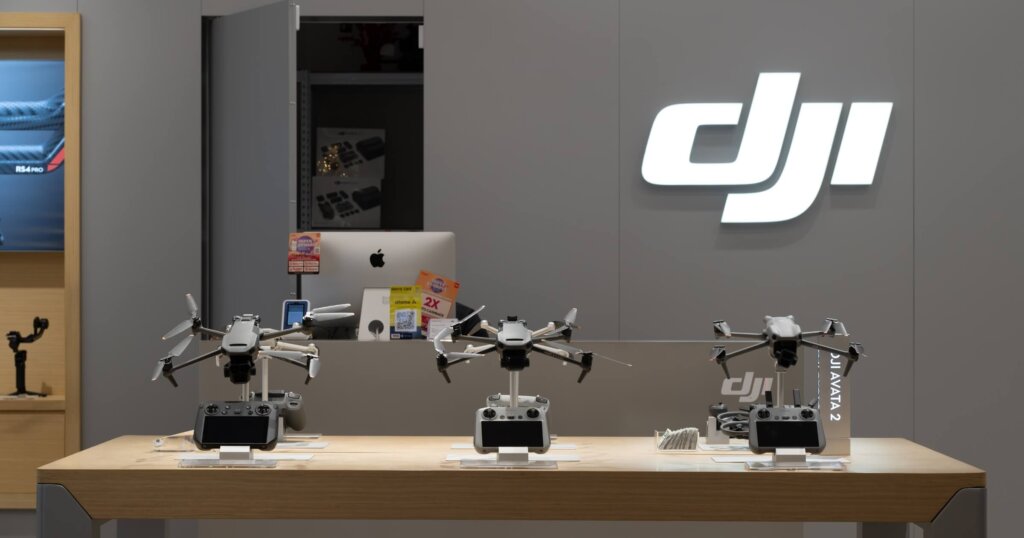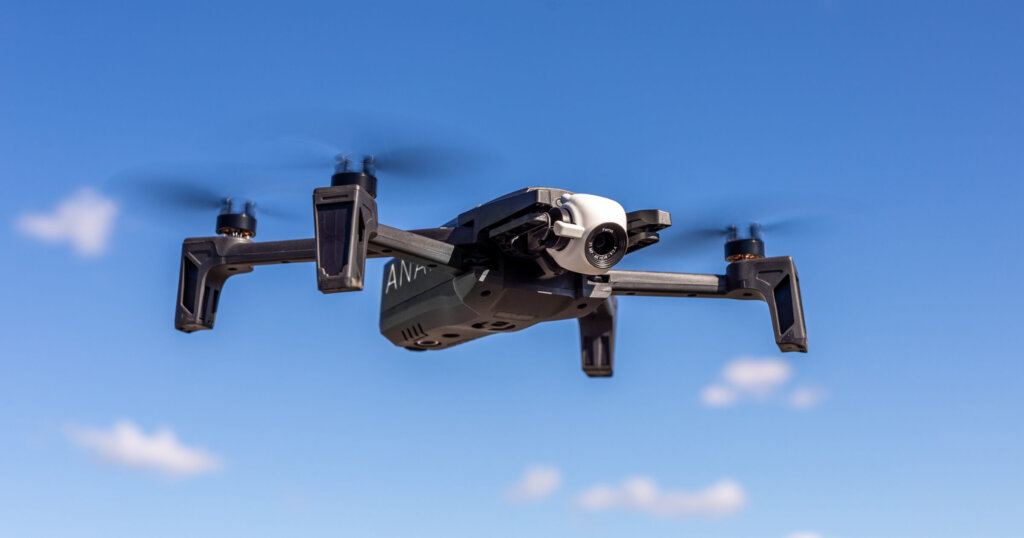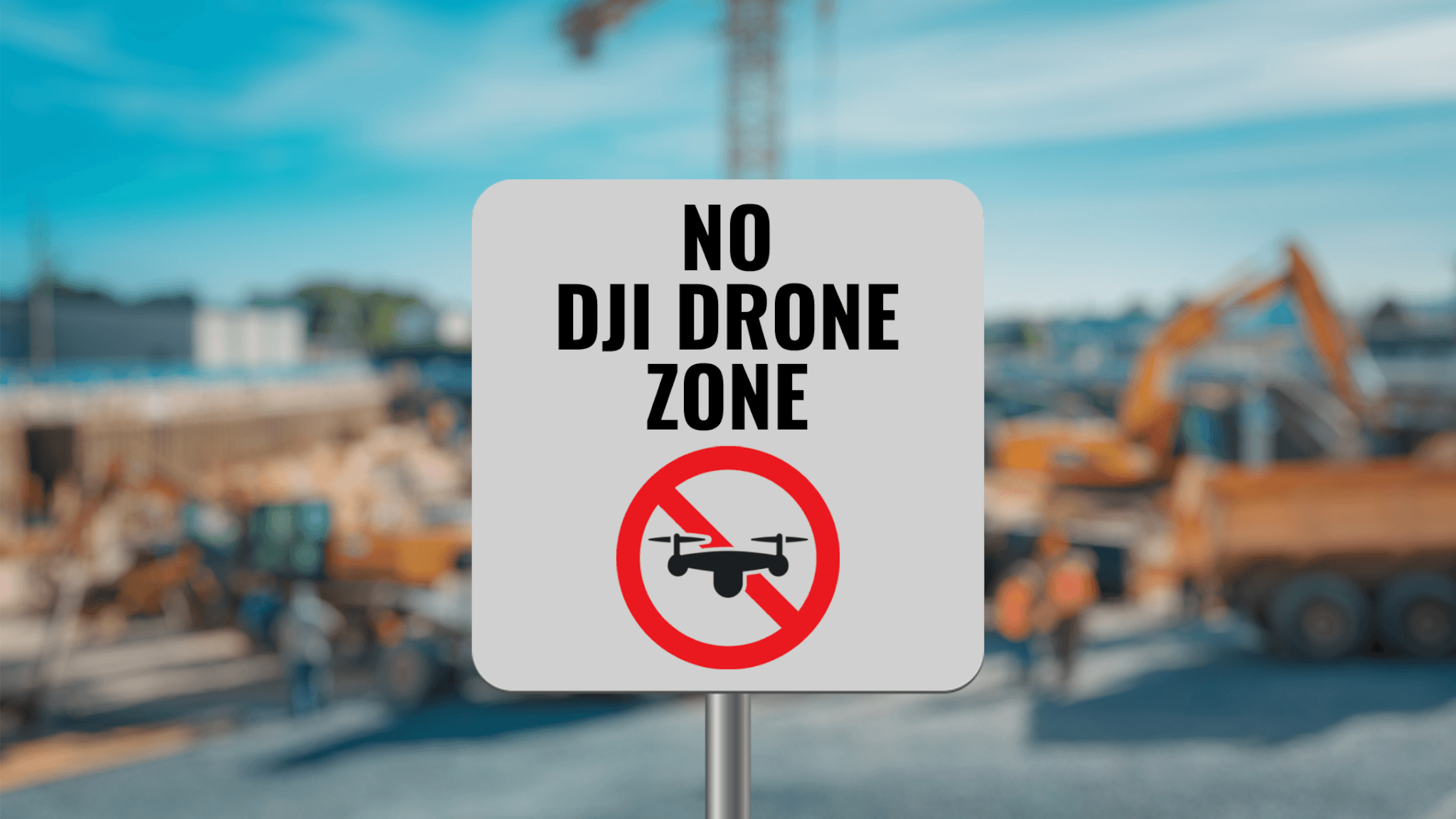A growing number of construction firms, surveyors, and emergency responders are rethinking their drone strategies as tensions rise between the U.S. and leading Chinese drone companies. At the center of it all is DJI, whose drones have long set the standard for aerial mapping, data collection, and site inspections. With DJI’s products used everywhere from job sites to power lines, many professionals are now asking: What happens if the U.S. government pulls the plug?
Quick look:
- A pending U.S. ban on DJI drones threatens construction, photogrammetry, and infrastructure inspections, with ripple effects expected across job sites.
- Lawmakers cite data privacy and ties to China as reasons to restrict DJI drones under the 2025 National Defense Authorization Act.
- U.S.-based drone makers like Skydio and Autel are gaining ground, but can’t yet match DJI’s price, performance, or software integration.
- Professionals relying on DJI drones should assess inventory, update systems, explore alternatives, and train teams ahead of any restrictions.
DJI drone ban explained: What’s going on in 2025
DJI, short for Da-Jiang Innovations, is a Chinese drone maker that dominates the drone market worldwide, especially in industries like construction, mapping, agriculture, and public safety. Known for producing a wide range of consumer drones, including the popular DJI Mavic, DJI Air 3, and Mini-series, the company’s drones are widely used by content creators, Emergency Services, AEC professionals, and even law enforcement.
While the drone market has seen new products come out, DJI’s technology is far more advanced at price points hard to beat. This has helped DJI dominate the drone market controlling more than 70 percent globally and about 80 percent in the United States, according to estimates.

DJI store showcase. Photo courtesy of Shutterstock.
But in 2025, DJI’s foothold in the US market is at serious risk.
Behind the scenes, the pressure to ban DJI drones has come from lawmakers concerned about security risks and the potential exposure of sensitive data to the Chinese government. Whether you’re flying drones for public safety, critical infrastructure assessments, or content for a YouTube channel, any restrictions on DJI could have major implications on your business.
Thanks to Section 1709 of the 2025 National Defense Authorization Act (NDAA), a sweeping defense bill, the U.S. government is requiring all drones manufactured by entities deemed “foreign adversaries” to undergo a national security review. DJI, as a Chinese technology company, falls squarely within this scope. If federal agencies, including the Department of Defense, Commerce Department, and Border Protection, don’t complete that review by the end of the fiscal year, DJI will be automatically removed from the Federal Communications Commission (FCC) list of authorized communications equipment.
That would mean a US drone ban on DJI’s gear for any future government contracts and possibly a cascading effect across private and commercial industries as well. Concerns about Chinese drones and data collection have been brewing for years, especially under past executive orders and previous crackdowns during the Trump administration.
If the ban goes through, it could prevent the use of DJI’s new DJI drones, cut off software updates, and halt sales of Chinese-made drones in the U.S.
Why the U.S. wants to ban DJI drones
At the center of this potential ban is a growing concern over national security risks.
Because DJI is a Chinese technology company, there are fears that flight data, imagery, and even personal information gathered by users, whether private companies, law enforcement, or federal government agencies, could be accessed or intercepted by foreign actors. These concerns aren’t new. In fact, they’ve intensified over the years as DJI drones have been found in everything from police departments to emergency services, often purchased through government contracts with little to no oversight of their security measures.

DJI flagship store in Shenzhen, China. Photo courtesy of Shutterstock.
This scrutiny has led to multiple bipartisan efforts aimed at curbing the influence of Chinese drone makers, with legislation like the Countering CCP Drones Act calling for direct action. The bill would prohibit the federal government from using Chinese-made drones, despite DJI’s insistence that its devices are safe and secure. As Congresswoman Elise Stefanik bluntly stated, “DJI poses a clear and present national security threat.”
Adding fuel to the fire is the broader push to decouple from Chinese manufacturers across the tech sector, particularly in light of other legislation like the Uyghur Forced Labor Prevention Act. With federal agencies under increasing pressure to ensure compliance, DJI’s future in the U.S. market is anything but guaranteed, even if its drones remain popular among consumers and professionals alike.
How DJI is responding
DJI has taken a defensive, but measured, approach while pressure from the U.S. government continues to mount. The Chinese drone maker has publicly welcomed national security reviews, maintaining that it has nothing to hide and that its products pose no threat to data privacy or public safety. In a series of official statements, DJI has consistently denied any data misuse or inappropriate links to the Chinese Communist Party.
To alleviate concerns, the company has introduced several new features designed to enhance user control and improve security. One of the most notable is Local Data Mode, which prevents the drone’s systems from transmitting information over the internet; a major move to satisfy concerns around data transmission and personal information storage. DJI has also disabled geofencing for select models, giving commercial users in the U.S. more control over where they can fly, especially in remote or critical infrastructure areas.
DJI is betting that its widespread adoption, product quality, and proactive security measures will be enough to keep it in the US market. However, many experts believe otherwise.
What happens if DJI drones are banned?
DJI drones have become almost synonymous with superior photogrammetry, especially in industries like construction, surveying, and infrastructure inspection. Professionals use it for:
- Site surveys and mapping
- Progress monitoring
- Inspection and quality control
- Safety monitoring
- Stockpile and volume measurements
Marketing and client reporting - Environmental impact assessments
If the DJI drone ban goes into effect, these users are likely to feel the ripple effects quickly. The most immediate issue will be workflow disruptions, as many firms would need to retrain staff on alternative drone systems, some of which have a steeper learning curve or less intuitive flight software. Then there’s the financial hit: lack of comparably priced replacements means companies might have to pay more for U.S. drones or face long procurement timelines. The result will lead to delays in everything from site mapping to as-built modeling, and a lot of uncertainty for field teams.
DJI drone alternatives: Are they any good?

Parrot Anafi drone. Photo courtesy of Shutterstock.
With a potential DJI drone ban on the horizon, professionals are trying to find viable replacements. A few names keep cropping up: Autel Robotics, Skydio, and Freefly Systems. These companies offer solid products, especially Skydio, which has earned praise for its autonomous navigation and U.S.-based manufacturing. However, these alternatives often cost more and come with trade-offs like shorter flight time, limited camera specs, and weaker software support, making the switch anything but simple.
The biggest hurdle by far is the price point.
Most alternatives cost significantly more for comparable features, and even then, there are trade-offs. They’re not yet full plug-and-play replacements for DJI’s suite of camera drones, especially for teams that rely on tools like DJI Mavic or the Mini drone for quick aerial scans.
If cost is an issue, there are businesses providing drone rentals and services at fixed rates. This can help your business avoid making major investments in gear that may not be needed. It’s also a great alternative for companies that use drones sparingly.
With pressure from the U.S. House of Representatives and the growing push for American-made drones, innovation could accelerate. Still, building reliable hardware, developing new software ecosystems, and ensuring security audits takes time. It could be a while before we see drone technology match the performance and price of DJI.
So while alternatives exist, most are better viewed as long-term options rather than instant fixes.
How to prepare for the DJI drone ban if you rely on DJI drones
If your business depends on DJI’s drones, now’s the time to get proactive without panicking.
A ban isn’t guaranteed, but the looming ban tied to the National Defense Authorization Act could come into play as early as late 2025. That gives you a limited window to prepare for what could be a major change in the drone industry.
Step 1: Document your fleet and how your business uses drones in the field
Start by documenting your current fleet, including models like the DJI Mavic, Mini drone, or DJI Air 3. Make sure all your firmware and software updates are current, and begin reviewing how your teams are using drones on job sites or infrastructure projects. This helps with compliance in the event that federal agencies implement stricter oversight or tracking requirements in the future.
Step 2: Consider replacements, renting, and training
Next, you’ll need to consider possible replacements that are either domestic or from a provider that’s secure. Investing in a few backup drones or batteries now, especially if you rely heavily on aerial operations will help reduce the immediate impact of the DJI ban if it does go through. If the cost is too high or your use is not frequent enough, look for companies that offer drone rental services and get in touch for quotes. Companie like Aerial Prospex offer several services including LiDAR mapping, photogrammetry, and aerial inspections.
Once you’ve chosen your alternative option, it’s wise to look into training options for these systems.
Even if Autel Robotics or Skydio aren’t ready to fully replace DJI today, getting your team familiar with their flight controls and software can reduce the learning curve later. With DJI drones banned, even temporarily, it’s the teams who prepared early that will stay airborne.
Step 3: Update security settings in your DJI drones
You’ll also want to evaluate your security settings, especially regarding data transmission and flight logs. Enabling features like Local Data Mode and restricting internet connectivity can help address some of the core national security concerns cited by the U.S. lawmakers and groups like the Drone Advocacy Alliance.
Bottom line
The DJI drone ban isn’t finalized yet, but the risk is growing by the day. With pressure mounting from the U.S. government, professionals who rely on DJI’s drones should take this moment seriously. Whether you’re flying for construction, surveying, emergency services, or critical infrastructure, preparing now can save you a lot of headaches later.
There’s still room for optimism, though, as innovation in drone software and safety is accelerating across the industry.
To stay ahead of new developments, drone tech updates, and expert insights, subscribe to the Under the Hard Hat newsletter. We’ll keep you informed so your crew can stay compliant, competitive, and ready for whatever comes next.


